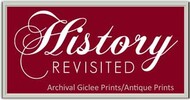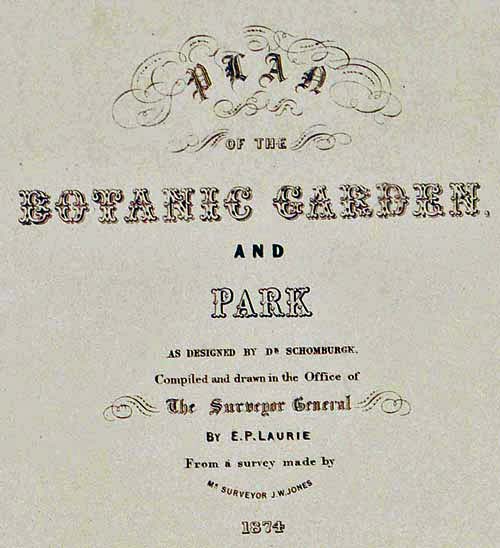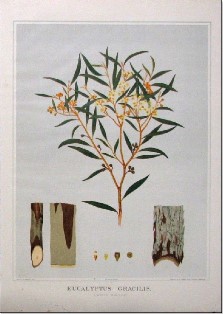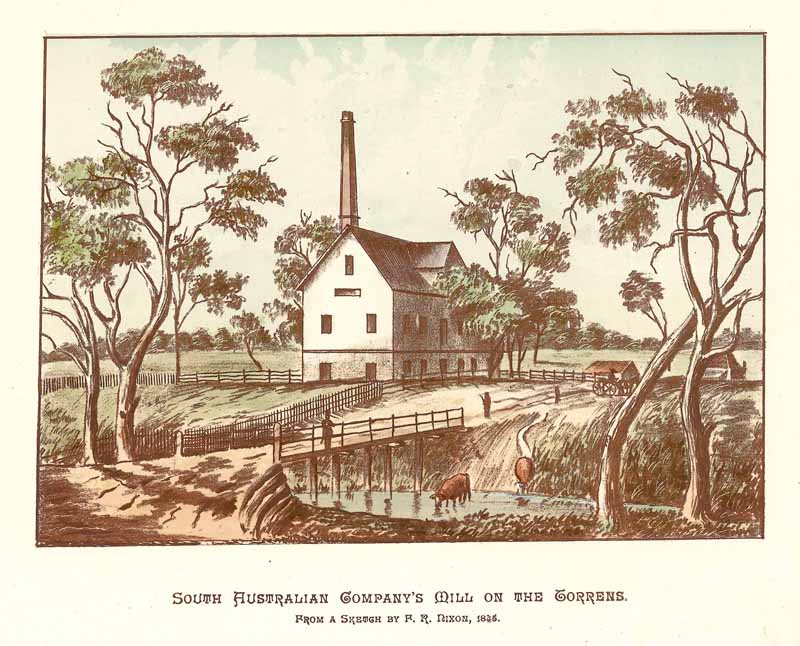 Loading... Please wait...
Loading... Please wait...All prices are in All prices are in AUD
Categories
Blog History Revisited
Schomburgk's Botanic Garden & Park Plan, 1874
Posted by ©Sandra Ker Owner Antiquarian Print Gallery 1989-2023, South Australia https://www.historyrevisited.com.au on 1st Jan 2023
Plan of the Botanic Garden & Park designed by Dr. Schomburgk, 1874
Let us start at the very beginning of the Adelaide Botanical Gardens. When first published, this garden design map was compiled and drawn at the "Office of the Surveyor General By E. P Laurie From a survey by Master Surveyor J.W. Jones, Surveyor General’s Office, Adelaide. Frasor S. Crawford Photo-lithographer, 1874." This was all cutting edge printing technology at the time.
This map of Adelaide Botanic Garden and Park is remarkable in its scope of both botanical functions, but also as a rudimentary source of other colonial sporting, artistic and recreational activities, including the early zoological exhibits. Yes, gardens are a botanist's delight, and in their creation, they serve as environments for many other pursuits. Dr. Schomburgk was nothing if not ambitious in his civic ambitions. Here we see a birdseye vision of "all good things like a rich Christmas Pudding" from the perspective of a dedicated botanist who knew the benefits of entertaining the public, in an age before radios, cinematography, and the push-button entertainment of computers and television. Fast forward 140+ years, any of these once made portable, can also be enjoyed in his creation, for example the Moonlight Cinema, and more recently (March 2024), Adelaide Fringe "Natural Wonders" Illuminations. What had been achieved already by the first superintendent and then director, George William Francis, was incorporated in this map. However, it was the far-reaching scope of his vision incorporating so many contemporary features, within the boundaries of the River Torrens, Hackney Road, North Terrace and Frome Road. Ambitious indeed! Many remain today, like the Directors Residence, where Dr Moritz Richard Schomburgk lived, the Head Gardner's Cottage & the proposed site for the Palm House. Other features of note were the reserve for horticultural exhibitions and music, Orangery, Experimental Garden, Victoria Regis House, original Rosery, bird aviaries & animal enclosures, Aquarium, Croquet Lawn, Archery Range, the avenue for Monocotyledons /Dicotyledons, Medicinal Garden, Diana's Island within the original lake, and more. It also visually explains the proximity to the Hospital grounds, 'Lunatic Asylum' (eventually accommodated by Parkside's Glenside), while indicating where the South Australia Company's Mill was located on Hackney Road, near the current location of the Hackney Hotel (built 1883). Perhaps the SA Company Mill was included to illustrate the economic success of the grain growers, helped along by the active research by Schomburgk's botanic Antipodean institution.
Dr Richard Schomburgk, Botanical Gardens Director, Adelaide
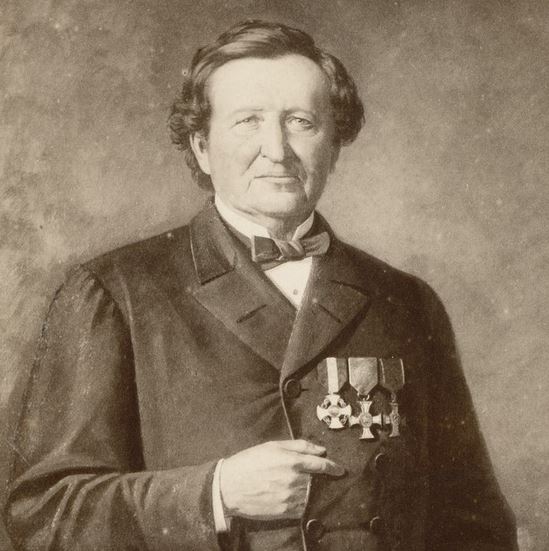
South Australia Act was passed in London in 1834 with the Colony being proclaimed by Governor John Hindmarsh in December 28, 1836. Surveyor Colonel William Light unveiled his Plan of the Adelaide in 1837. Light had envisaged a Botanical Garden from the "get-go" to be in the west Parklands while completing the town survey of Adelaide, and later the District Blocks of the surrounding land. That survey's arrival in London in 1837, sparking a Victorian Era "Buy Off Plan Property" investment opportunity, had all the features of "A Slice of London in the Antipodes" to be either sold directly off the plan, or later at on-site land auctions, to prospective investors and settlers in/from England. In London, Royal Parks and Gardens were celebrated contributors to London’s landscape. Botanical institutions, like Kew Gardens and the Chelsea Physics Gardens, were vital to the study of international botany as botanical specimens returned with celebrated Voyages of Discovery, like those of Captain James Cook & Sir Joseph Banks, and Matthew Flinders' Voyage of scientific discovery 1800-1804. It was in these Botanical Science hubs that the potential for advancing medical science and commercial cropping was investigated and recorded by scientists, recorded by artists, destined to become beautiful & educational prints.
Already, three attempts had been attempted to make the public garden dream a reality but failed due to flooding and lack of funds. The South Australian Agricultural and Horticultural Society had been established in 1842 as a matter of urgency. Eager colonists wanted, and needed, to understand the nature of this topsy-turvy southern hemisphere environment as a matter of survival. In 1860 the Botanic Act was passed including the establishment of a Botanic Garden, Botanic Park, and Adelaide Zoo, all evidenced in this 1874 plan. George William Francis was the first Director in 1860, who first established the Herbarium, a botanical Library, and saw the need for a Museum of Botanic Economy like the one established in London's Kew Gardens. When Dr Richard Schomburgk took over in 1865, it was he who first saw the necessity of setting up forest reserves to preserve the already threatened local flora. This work was eventually made real by John Edne Brown, who published "Forest Flora of South Australia" 1882-1890.
Brown was greatly assisted on the botanical services offered by the Botanical Gardens. It was Schomburgk who established the Museum of Economic Botany in1881. This was dedicated to the discovery of "useful plants" to propagate in our challenging soils. A federal grant of $1.125 million has restored this old dame during the first decade of the 21st century. A much welcomed use of this commanding space was its use to house botanical exhibitions. As we see at the center of the 1874 map, there was a designated "Exhibition" area. It was an exhibition of aforementioned John Edne Brown's Forest Flora of South Australia" that the newly formed Picture Framer's Guild of Australia visited in 2009, as part of our AGM itinerary. I will note here, at the Great Exhibition of 1851, held in the Crystal Palace designed by Joseph Paxton, that the South Australian exhibit displayed wheat from Mount Barker. Remarkably, only 15 years after settlement John Frame was one five Mount Barker wheat growers "who contributed samples of wheat that gained first prize in the Great London Exhibition, in 1851"
Colonial Garden Sports: Archery and Croquet
Archery is linked to Colonel William Light who was a keen proficient of the sport, arriving in the new Colony with two long bows & "many sets of arrows". Although there seems to be no formal archery Club until 1850, it is noted that the original plan of Adelaide had reserved land for that purpose in Light's celebrated Parklands. It seems the decedents of this early club were to become Australian, Olympic and World Championship holders for South Australia.

Garden Croquet: Formerly known as the "Police Paddock", in 1873 Schomburgk assigned newly allocated land to the Promenade and the Croquet Lawns (as seen on this plan). Garden Croquet was popular in Britain and proved a leisurely activity among the colonists. Basically, balls hit with mallets through hoops laid out in a sequence laid out like billiards. Croquet was elevated to an Olympic sport at the second modern Olympics as part of the Paris in 1900.
John Stevens & the South Australia Company Mill
On an indulgent personal note, I am thrilled to see the inclusion of the SA Company's Mill on this map located in the upper right on the River Torrens. My ancestor, John Stevens, operated the Mill and the adjoining experimental Park Farm. Regrettably, the Company's Mill was demolished in 1875. Park Farm, set up to test the crop viability, was also part of the Mill. Both important contributors to the economic survival of the South Australian colony have been reduced to a metal sign closer to the river bank. My great great grandfather leased the mill in the 1850s through to his death in 1871, three years before this map was printed. There were many grain mills in Adelaide. The fluctuating price of grain, drought, and mining discoveries caused great highs and lows in local markets. However, "Who dares wins", especially in the colonial era. It was a great opportunity to be in the milling business, especially after the gold discoveries in Victoria & New South Wales. Bread was a major staple to any mining community's diet. South Australia's agrarian-based economy presented enormous opportunities to a miller who had migrated from the environs of Chichester on Britain's south coast. It also underscores the essential efforts of the Agricultural & Horticultural Society' & Schomburgk, to match crop to soil types. The fluctuating successes of my ancestor and his sons may have been more desperate it it wasn't for the emergence of Captain Cadell & the Murray Riverboat trade during the 1850s.
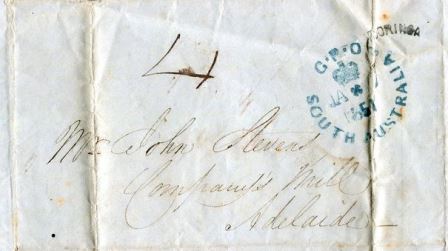
Stevens could not escape the impact of Victorian gold that was to rob the smaller colony of South Australia of its valued free labor. However, like the recent Chinese tariffs placed on Australian agricultural and mining exports in 2020-21, John Stevens found other opportunities of intercontinental markets & trade with Valparaiso grain growers in Chile. If the valuable labor was leaving the colony, John Stevens, his sons & partners, would take advantage of the emerging riverboat trade, taken up by Captain William Randell & Captain Francis Cadell. The opportunity to trade with neighboring colonies on the Murray River to send South Australian flour, & contraband liquor (evidenced in original letters between Stevens and his new business partner James Charles Coke), answered gold mining digger's needs. It would have been a modern-day "Pop-up Shop" on the River Murray banks. Another surprising opportunity had also manifested due to the colonial Victorian government placing a Chinese goldfield quota on entry to coastal ports: many Chinese tracked overland from Robe in South Australia. This was a perilous journey on foot. But maybe smuggling Chinese migrants to the gold fields on the riverboats was a safer, quicker and more profitable option? Interesting times were afoot indeed...
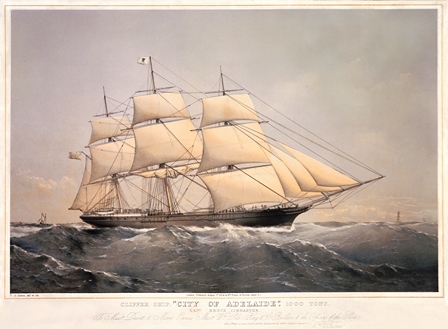
"City of Adelaide" Clipper Ship - What is Old Is New Again
Back to the Future The City of Adelaide clipper, with her sister-ship, the Cutty Sark, represent the last of the commercial ridgy-didge sailing ships that utilised renewable wind power to get cross oceans. As the only surviving composite hulled sailing ships, they are constructed at the end of a 60 year window between timber Napoleonic wind-powered oak [...]

Napoleon, Hudibrastic Poetry, Doctor Syntax & the Power of Satire
"The Life of Napoleon- a Hudibrastic Poem in Fifteen Cantos by Doctor Syntax". Given the illustrator is George Cruikshank, the historical context and method of delivery this will be fun to pull some historical strings & see what we find...The Life of Napoleon...We know of the man, Napoleon Bonaparte, who became the the first emperor [...]
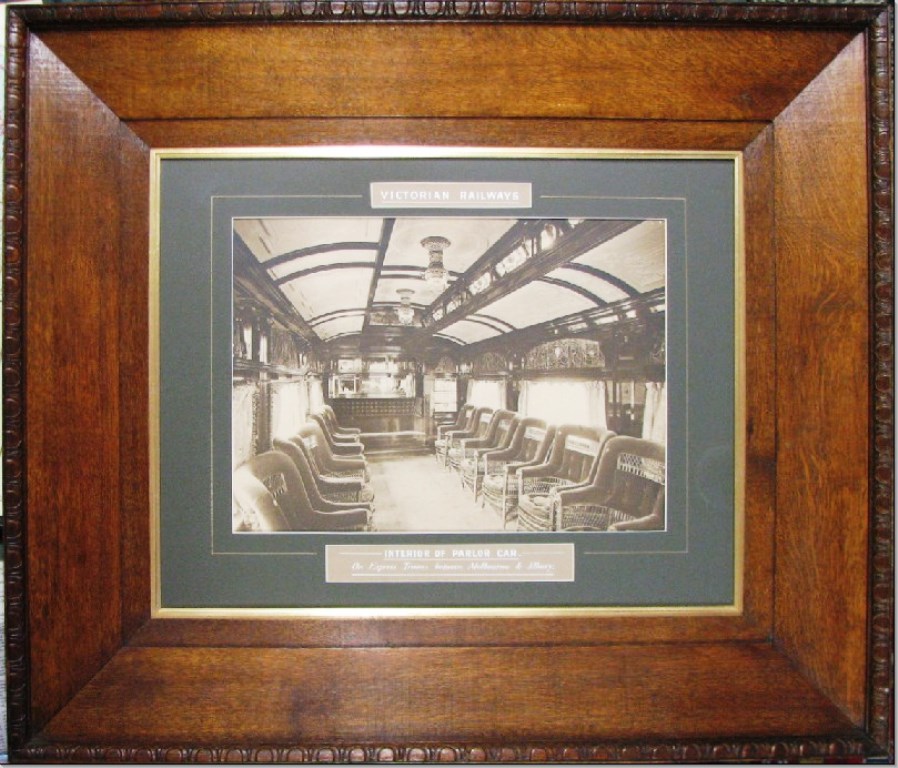
Colonial Melbourne to Albury "Parlour Car" Photo Connects to Adelaide Past & Present
In the 1970s a very young me was introduced to the concept of luxury train travel, long before I knew about such thing as the Orient Express, for example. My father purchased two unloved ornate brass light fittings. "Well, these used to be in Railway carriages, but give them a clip, would make fine lamps, don't [...]
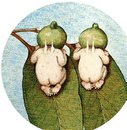
May Gibbs: Successful Business Woman
Australia's Early 20th Century "Influencer"In 2012 I joined a small business mentor. Eager participants followed him around the wide brown country of ours. He was convinced that business success is a matter of finding a niche "an inch wide and a mile deep”. The bigger the problem it solves the more successful the business. My background is art [...]
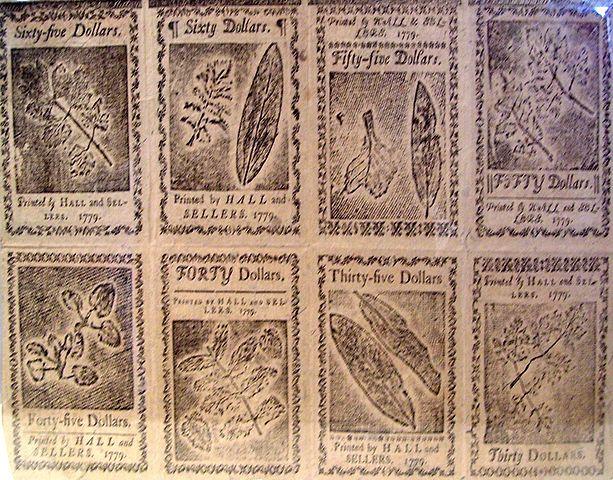
Benjamin Franklin & Mother Nature Thwart Counterfeit Colonial Banknotes
If "Necessity is the Mother of Invention"...Many of the world’s inventions were often a remixing of known concepts to solve new problems. Many were fueled by the Age of Enlightenment (circa AD1650-1820). Preparing the way was Johannes Gutenberg’s printing press. He had a dream to make education accessible to all, but how was he to achieve [...]

ENGLAND VS SOUTH AUSTRALIA : First Class Cricket Test at Unley Oval 1903?
Arthur ThomasThis is photographic evidence of the only First Class Cricket Match in SA played away from the haloed grounds of the Adelaide Oval. I stumbled upon this vision at Christmas 2013 in the Unley Council Chambers. A local resident had worked tirelessly to knit the separate glass panoramic plate images together digitally, housed at [...]

Combine a French Queen, a Belgian Artist & an American Cactus...what do you get?
Dealing in Antique Prints & Maps for 30 years has been a powerful educator. Many are inspired by major historical events, while others are a puzzlement as time had buried their relevance. No matter. Sometimes the incidental footnotes is where the magic lives. This a surprising unexpected legacy discovered born of the French Revolution, the [...]

South Australia Confectionary, Colonial German Migrants & World War I
Why did whole German villages migrate to a British prototype colony? For all of Adelaide's aspiring to be "A slice of London in the Antipodes", the colony attracted a large Lutheran population by virtue of Adelaide's religious liberty and status as a Paradise of Dissent. This new British settlement coincided with Frederick William III's [...]
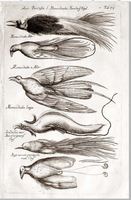
Birds of Paradise: "Birds of Perpetual Flight"?
The Age of the Intrepid ExplorerThe Age of Enlightenment gave rise to great explorers, both for new lands to expand Empires, to find new trading opportunities to finance empire-expansion, and extend the knowledge of science and the natural world. New discoveries needed artists to record them. Wealthy men of science became benefactors encouraging artists to [...]
Recent Posts
- » Schomburgk's Botanic Garden & Park Plan, 1874
- » "City of Adelaide" Clipper Ship - What is Old Is New Again
- » Napoleon, Hudibrastic Poetry, Doctor Syntax & the Power of Satire
- » Colonial Melbourne to Albury "Parlour Car" Photo Connects to Adelaide Past & Present
- » May Gibbs: Successful Business Woman
